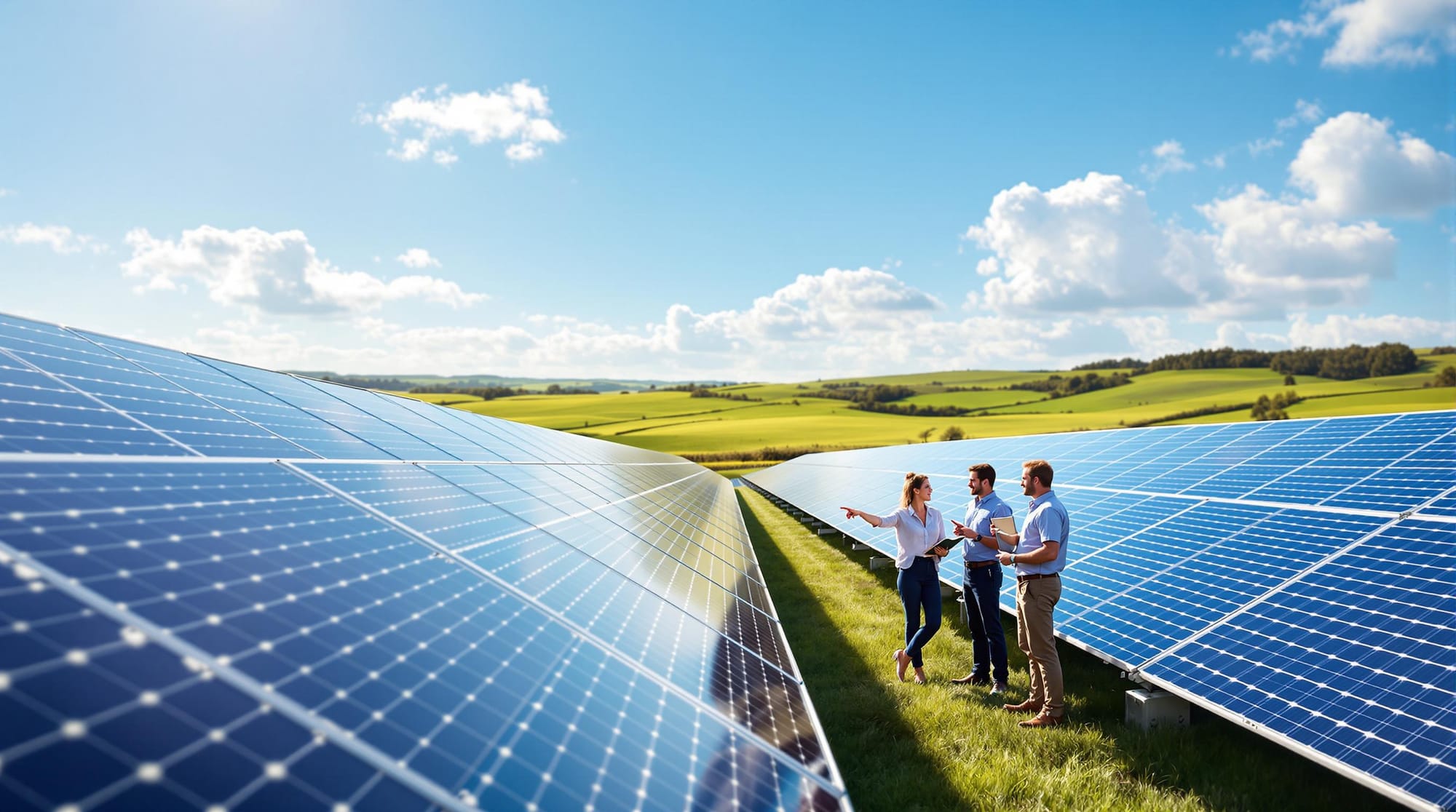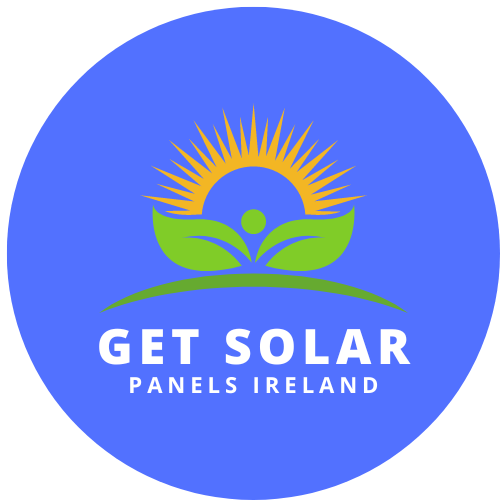Ultimate Guide to Solar KPIs in Ireland
Explore essential solar KPIs in Ireland, their importance for performance optimization, and strategies for improvement to meet national energy goals.

- What are Solar KPIs? Metrics like Performance Ratio (≥85%), System Availability (≥95%), and Annual Degradation Rate (<2.5%) help measure and optimize solar system performance in Ireland's unique climate.
- Why are they important? These KPIs are essential for meeting Ireland's solar energy goals, such as 5GW by 2025 and 8GW by 2030, outlined in the Climate Action Plan.
- How to improve them? Use IoT sensors, bifacial panels, and regular maintenance (e.g., cleaning and inspections) to enhance performance.
- Grant Eligibility: SEAI requires a minimum Performance Ratio of 75% and 85% availability for systems to qualify for grants and funding.
| Key Metrics | Targets | Why It Matters |
|---|---|---|
| Performance Ratio (PR) | ≥85% | Ensures high efficiency |
| System Availability | ≥95% | Keeps energy output steady |
| Annual Degradation Rate | <2.5% | Maintains long-term reliability |
| Capacity Utilization | 25-30% | Reflects system efficiency |
Quick Tip: Regular cleaning and inspections can prevent energy losses of 8-12%, while advanced tech like perovskite solar cells boosts low-light performance by 15-18%. For grant eligibility, track KPIs closely and maintain SEAI standards.
Key Solar KPIs for Irish Projects
Power Output Measurement
Modern solar installations in Ireland focus on three main metrics: total kilowatt-hour (kWh) generation, peak power output (kWp), and Capacity Utilization Factor (CUF). These are essential for evaluating and optimizing system performance.
For example, a 100kWp commercial system in Cork sets a clear benchmark, aiming to generate 85,000 kWh annually with a CUF of 27%. These numbers are tracked using SCADA systems, which adjust for weather conditions.
| Metric | Target Range | Purpose |
|---|---|---|
| Total kWh Generation | 850 kWh/kWp yearly | Measures productivity |
| Peak Power Output | 95-98% of rated kWp | Ensures performance |
| Capacity Utilization | 25-30% | Reflects efficiency |
Notably, Ireland's CUF range of 25-30% plays a key role in advancing the Climate Action Plan's 8GW solar energy goal by ensuring efficient use of resources.
Performance Ratio Analysis
Ireland's unique climate requires adjusted Performance Ratio (PR) targets. While global standards range from 75-85%, Irish solar systems typically fall between 68-72% due to frequent cloud cover.
"SEAI-funded installations must maintain minimum PR of 65% to qualify for ongoing support".
The Tesco Ireland Dundalk project serves as a great example of PR optimization. By using dynamic tilt adjustments and AI-powered cleaning schedules, it achieved a 22% boost in winter performance. These strategies will be discussed further in the sections on KPIs and Irish Solar Policies.
Annual Efficiency Loss
Tracking annual efficiency loss is essential for maintaining system performance in Ireland's damp climate. High-quality monocrystalline panels in Ireland typically experience degradation rates of 0.5-0.7% annually, which is better than the global average.
However, coastal systems face additional challenges, such as salt-induced degradation at rates of around 0.9% per year. To combat this, professional cleaning services that use deionized water systems can maintain 97% surface transmittance, compared to just 89% with natural rainfall.
To further protect systems during winter, many installations include heating elements in their mounting systems to prevent moss growth. Quarterly professional cleaning combined with these measures ensures consistent performance throughout the year.
Irish Weather and Solar KPIs
Weather Effects on Solar Output
Ireland's climate requires tailored adjustments to solar KPIs, especially since scattered sunlight makes up 65% of Dublin's solar energy potential. These adjustments are based on the Performance Ratio targets previously discussed.
| Weather Factor | Impact on KPIs | Mitigation Strategy |
|---|---|---|
| Cloud Cover | -20-30% irradiance | Bifacial panel configurations |
| Rainfall | 5-7% soiling losses | Automated cleaning systems |
In line with SEAI certification standards, Clare Solar Farm achieved 92% availability by using water-repellent coatings, setting a strong example for coastal solar installations.
KPI Tracking Systems
Advancing from Cork's IoT sensor developments, Ireland now employs cutting-edge tracking systems to meet its unique climate needs. The SEAI's Retrofit Monitoring Platform mandates 15-minute interval logging with a data loss tolerance of under 2%.
Key tools include:
- Dual-axis irradiance sensors
- Smart inverters with ±1% accuracy
- Predictive systems that integrate weather data to meet national energy monitoring requirements
"Irish solar forecasts require 12% wider variance margins than Mediterranean equivalents, necessitating more sophisticated monitoring approaches for Irish installations".
One standout example comes from Kerry, where a residential solar setup used micro-inverters and detailed monitoring to achieve an 81% winter performance ratio - 15% above the regional average.
Additionally, self-cleaning nano-coatings have emerged as a game-changer. Tests conducted by Cork University showed these coatings reduced soiling losses by 2.3% annually. These systems automatically activate cleaning cycles, ensuring consistent performance during prolonged dry spells.
KPIs and Irish Solar Policies
Grant Performance Requirements
Ireland's SEAI enforces strict performance standards for solar installations to qualify for government grants. For residential systems, there’s a required Performance Ratio (PR) of 75% and an annual energy yield of at least 900 kWh/kWp. Commercial systems are held to even higher standards, requiring 85% availability rates and an inverter sizing ratio of 1.2 to ensure grid stability.
| Installation Type | Key Performance Requirements | Monitoring Frequency |
|---|---|---|
| Residential | 75% PR, 60% consumption coverage | Monthly |
| Commercial (>50kW) | 85% availability, 1.2 DC/AC ratio | 5-minute intervals |
To qualify for zero-VAT schemes, systems must meet additional benchmarks, including inverter efficiency above 97% and degradation rates below 0.5% per year. If a project’s PR drops below 70% for two consecutive quarters, penalties apply. These include grant repayment and exclusion from future funding opportunities.
National Energy Targets
The Renewable Electricity Support Scheme (RESS) sets specific benchmarks for solar projects, requiring:
- Land use efficiency of at least 35W/m²
- A capacity factor above 11%
- Annual CO2 displacement of 0.85t/MWh
Approved monitoring platforms, such as SolarEdge and FIMER, ensure compliance with EN 61724 standards by automating data validation before submission to SEAI. These platforms utilize IoT sensor technology to provide real-time tracking, as outlined in Ireland's Climate Action Plan.
For wholesale electricity market compliance, solar projects must capture real-time generation data every 5 minutes and retain it for at least 10 years. This ensures transparency and long-term performance tracking. Additionally, RESS participants must secure a €25,000/MW performance bond to guarantee accountability, aligning with Ireland's goal of sourcing 80% of electricity from renewables by 2030.
Improving Solar KPIs in Ireland
New Solar Technologies
Ireland's advancements in sensor technology have paved the way for new solar solutions that improve performance metrics. One standout is perovskite solar cell technology, which performs exceptionally well in Ireland's cloudy climate. These cells achieve 15-18% greater efficiency in low-light conditions compared to traditional silicon panels. This makes them a strong candidate for helping Ireland meet its 2030 solar capacity goals, especially under frequent cloud cover.
| Technology | Performance Boost | Ideal Use Case |
|---|---|---|
| Tesla Powerwall | Optimizes energy storage | Managing peak demand |
| Perovskite Cells | 15-18% better low-light output | Enhancing performance in clouds |
| Bifacial Panels | Up to 30% higher energy yield | Best for ground-mounted setups |
Panel Maintenance Guide
Keeping solar panels well-maintained is critical for consistent performance, especially in Ireland's challenging weather. Regular cleaning and upkeep ensure compliance with SEAI's 65% Performance Ratio (PR) requirement for grant eligibility.
"Quarterly cleaning maintains 97-99% of optimal yield, while neglected systems can lose 8-12% of efficiency due to seasonal debris buildup".
Key maintenance tips for Irish conditions include:
- Bi-monthly cleaning with deionized water to avoid limescale
- Vegetation control every six weeks during the growing season
- Seasonal inspections to check for hail and ice damage
Professional inspections are especially important. They can prevent 15-20% energy losses caused by microcracks or corroded connections.
Professional Support
Building on IoT tracking methods discussed earlier, modern systems now offer real-time alerts for performance dips. For example, immediate notifications for 10% or more drops in Production Ratio can help resolve shading issues promptly.
Professional services also deliver measurable performance gains:
| Service Type | Impact on Performance |
|---|---|
| Irradiation Mapping | Increases yield by 8-12% |
| Inverter Upgrades | Achieves 98%+ conversion efficiency |
| Battery Retrofits | Improves grid independence by 40-60% |
Companies like Get Solar Panels provide certified technicians who ensure all enhancements align with SEAI grant requirements. Their monitoring packages include live KPI tracking, helping systems maintain peak efficiency throughout their lifespan.
For best results, align maintenance and inspections with SEAI's recommended schedule: daily yield checks, monthly availability reviews, and annual audits.
Summary: Solar KPI Best Practices
In Ireland, effective solar monitoring combines automated tracking with SEAI's required 75% Performance Ratio (PR) minimum for grant eligibility. This approach builds on IoT tracking techniques and maintenance protocols previously discussed.
Ireland's climate requires specific regional adjustments. For instance, solar systems in Dublin need 12-18% PR adjustments to account for cloud cover losses. Coastal installations face unique challenges, including faster degradation due to salt exposure, necessitating more rigorous monitoring. These adjustments address the weather-related issues highlighted in earlier analyses.
To stay compliant with Ireland's climate conditions, professional audits and automated alerts are essential. Commercial solar systems must show at least 85% annual utilization and achieve a 2.5-year energy payback period. These benchmarks align with the Climate Action Plan's monitoring goals.

